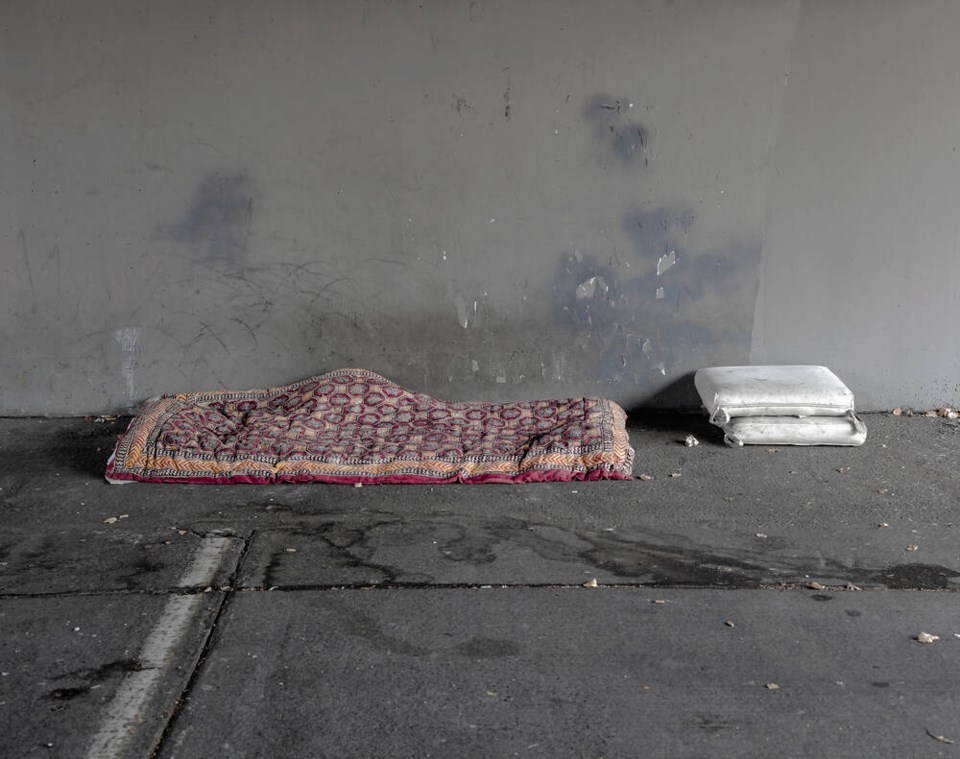People have “given up hope” of getting into homeless shelters in Burnaby, according to a local coalition of non-profits aimed at ending homelessness in the city.
Now the Society to End Homelessness in Burnaby is urgently requesting two new shelters to open in the city before this winter.
The non-profit’s executive director Carol-Ann Flanagan wrote to council on behalf of the Task Force to End Homelessness in Burnaby on May 9 to request two “critically needed” 24-7 shelters.
The society wants one of the shelters to be minimal barrier, such as the temporary Douglas Shelter, for people who may have “persistent and multiple episodes of homelessness.”
The other requested shelter would be for people who might be experiencing homelessness one time, such as vulnerable women and seniors.
Flanagan asked for the two shelters to be in different areas of the city, one in the north and one in the south, and to open by Oct. 1.
Urgency: ‘Turning people away’
She said Burnaby’s homelessness situation has worsened over the past winter.
“The sole shelter in Burnaby (Douglas) is full and turning people away most days; people have given up hope of getting in,” Flanagan wrote.
“Stays are lengthening, and this causes additional stress and frustrations.”
Flanagan said local non-profits have seen an increase in “the complexity and seriousness” of the conditions of people they serve, with more Indigenous people, seniors and people with serious health conditions coming in.
Multiple non-profit programs are becoming overwhelmed.
Flanagan said the extreme weather response sheltering site, a temporary shelter opened when the temperature drops below zero C, opened for a total of 104 nights and provided 1,320 bednights of service, the most since opening in 2005.
The weekly drop-in Outreach Resource Centres, which serve people who are homeless and at risk of homelessness, are increasingly busy: in March this year, 828 guests were served versus a total of 603 served in November last year.
The Burnaby Neighbourhood Food Hub (which runs every Tuesday from 3 to 5 p.m. and serves essential grocery items) fed almost 2,000 people in March.
“These high numbers are now constant and a significant increase from the prior average of 100 to 120 persons per week,” said Flanagan.
Further, the hub drop-in space on Sixth Street was “very busy” with 20 to 40 people coming in daily for day shelter services.
This resulted in “their programming being overwhelmed and neighbourhood concerns,” Flanagan said, and Progressive Housing Society moved away from the drop-in model. It will no longer be able to back-up the emergency weather response next season.
Homelessness is deadly, Flanagan said, citing statistics from the BC Coroners Service showing the number of homeless individuals who have died has continually increased since 2019, to 247 deaths of homeless individuals in 2021.
“Our members believe these numbers will continue to escalate given the weather and lack of resources.”
While recognizing “a continuum” of sheltering and support services is needed to end homelessness in Burnaby, Flanagan said, “(It) all starts with the life-saving and life-altering accommodation as the first step.”
Flanagan’s letter was referred to the Mayor’s Task Force on Unsheltered Community Members meeting on June 21.





